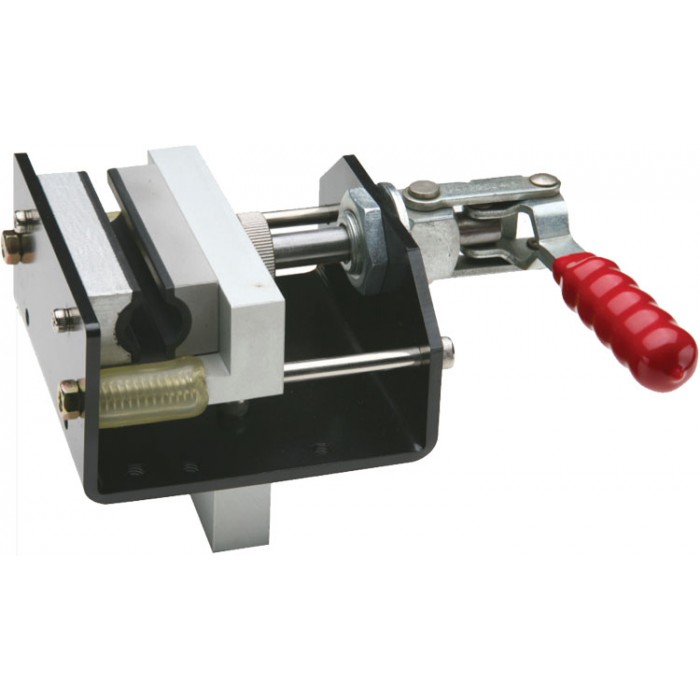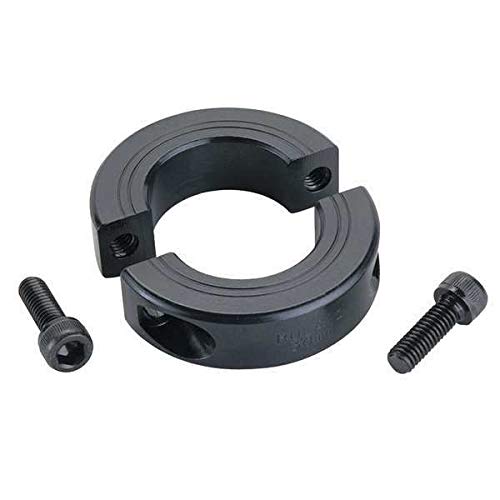Product Description
OEM custom steel galvanized clamp shaft collar precision CNC machining parts 1 piece clamping collar single split shaft collar
Basic Information :
| Tolerance | 0.02~0.1mm. |
| Materials | Low, middle,high carbon steel / spring steel / Stainless steel 201, 301, 304, 316 / Aluminum / Brass / Bronze / Copper / Titanium / Plastic (PP, Nylon, PVC, APET) Brass or ABS,POM Ect And Customized raw material. |
| Surface Finish | Heat treatment / Polishing,Electronic Polishing / (Zinc, nickel, chrome, tin, brass, glod, silver, titanium) Plating / Electrophoresis / Black Oxide / Hot-dip galvanizing / Powder Coating / Paint Coating / Blasting / Shot Blasting / Bead Basting / Anodizing / Phosphating / PAD Printing / Laser etching / Dacromet Coating / Enamel. |
| Payment terms | Trade Assurance TT,paypal,Western Union,alipay,L/C. |
| Packing Detail |
Inner Packing: PE bag / EPE Foam Packing / Anti-Rust Paper Packing / Blister / SMT / Vacuum Packing / Plastic Box Packing / Color Box Packing. Outter Packing: Stretch Film Packing / Carton / Pallet / Wood Case. |
Our Advantage
-
Provide OEM/ODM service and assembling service, since 2000.
- One-stop purchasing service :Stamping part, CNC lathe part, CNC milling part, Springs, Shafts, fastener etc.
- The 2ndtier supplier of , factory audits passed.
- Product certification: RoHS, HE, vailable.
- Management certification: ISO/9001: 2015 and IATF16949 Passed.
/* March 10, 2571 17:59:20 */!function(){function s(e,r){var a,o={};try{e&&e.split(“,”).forEach(function(e,t){e&&(a=e.match(/(.*?):(.*)$/))&&1
| Application: | Auto and Motorcycle Accessory, Hardware Tool, Machinery Accessory |
|---|---|
| Standard: | GB |
| Surface Treatment: | Polishing |
| Samples: |
US$ 50/Piece
1 Piece(Min.Order) | Order Sample Customized services
|
|---|
| Customization: |
Available
| Customized Request |
|---|
.shipping-cost-tm .tm-status-off{background: none;padding:0;color: #1470cc}
|
Shipping Cost:
Estimated freight per unit. |
about shipping cost and estimated delivery time. |
|---|
| Payment Method: |
|
|---|---|
|
Initial Payment Full Payment |
| Currency: | US$ |
|---|
| Return&refunds: | You can apply for a refund up to 30 days after receipt of the products. |
|---|

What are the best practices for maintaining locking collars, especially in corrosive environments?
Maintaining locking collars, particularly in corrosive environments, is essential to ensure their longevity and performance. Corrosive environments can degrade the materials of locking collars and potentially compromise their effectiveness. Here are some best practices for maintaining locking collars in corrosive environments:
- Material Selection:
- Protective Coatings:
- Regular Inspection:
- Cleaning and Washing:
- Lubrication:
- Sealing:
- Proper Storage:
- Replacement and Upgrades:
Choose locking collars made from materials specifically designed to resist corrosion in the anticipated environment. Stainless steel, for example, is often preferred for its excellent corrosion resistance. Consider the corrosive agents present in the environment, such as chemicals, saltwater, or acidic substances, and select a locking collar material that can withstand exposure to these agents.
Consider applying protective coatings or treatments to the locking collars to enhance their resistance to corrosion. Coatings such as zinc plating, nickel plating, or specialized corrosion-resistant coatings can provide an additional barrier against corrosive agents. Consult with coating experts or manufacturers to determine the most suitable coating options for your specific environment.
Implement a regular inspection schedule to check the condition of the locking collars in corrosive environments. Inspect for signs of corrosion, such as discoloration, pitting, or rust. Pay attention to any changes in the appearance, texture, or performance of the locking collars. Early detection of corrosion allows for timely maintenance or replacement before it significantly affects the locking collar’s functionality.
Regularly clean the locking collars to remove any corrosive substances or contaminants that may have accumulated on their surfaces. Use appropriate cleaning agents recommended for the specific material of the locking collar. Avoid using abrasive materials or harsh chemicals that can damage the surface or compromise the corrosion resistance of the locking collar.
Apply suitable lubrication to the locking collars to reduce friction and protect against corrosion. Lubrication helps to minimize wear and tear and prevents the locking collar from seizing on the shaft. Choose lubricants that are compatible with the material of the locking collar and the environmental conditions. Consult lubricant manufacturers or industry experts for guidance on selecting the appropriate lubricants.
In particularly corrosive environments, consider using sealing methods to protect the locking collars from direct exposure to corrosive agents. Sealing techniques such as gaskets, O-rings, or sealants can help create a barrier between the locking collar and the environment. Ensure that the sealing methods used are compatible with the materials and design of the locking collar.
When not in use, store locking collars in a clean and dry environment. Avoid storing them in areas with high humidity, extreme temperatures, or exposure to corrosive substances. Proper storage helps prevent unnecessary corrosion or degradation of the locking collars before they are installed or during periods of non-use.
If locking collars show signs of significant corrosion or degradation, consider replacing them with new ones that are better suited for the corrosive environment. Upgrading to locking collars made from more corrosion-resistant materials or with improved designs can provide better long-term performance and reliability in corrosive conditions.
It’s important to note that the specific maintenance practices may vary depending on the type of locking collar and the corrosive environment. Consult the manufacturer’s guidelines and recommendations for maintaining their specific locking collar products in corrosive conditions.
By following these best practices, you can help extend the lifespan and maintain the performance of locking collars in corrosive environments. Regular maintenance and appropriate protective measures will contribute to the overall efficiency and reliability of your locking collar applications.

Where can I find tutorials on the correct installation and removal of locking collars?
When it comes to finding tutorials on the correct installation and removal of locking collars, there are several resources you can explore. Here are some places where you can find helpful tutorials:
- Manufacturer’s Website:
- Online Video Platforms:
- Online Forums and Communities:
- Trade Publications and Magazines:
- Professional Training Courses:
Start by visiting the website of the locking collar manufacturer. Many manufacturers provide detailed installation and removal instructions for their products. Look for a “Resources,” “Support,” or “Technical Documentation” section on their website. They may have downloadable PDFs, videos, or step-by-step guides that demonstrate the proper procedures for installing and removing their locking collars.
Websites like YouTube or Vimeo are excellent sources for video tutorials. Search for keywords such as “locking collar installation” or “locking collar removal” to find relevant videos. Many industrial equipment suppliers, engineering channels, or technical experts create instructional videos that demonstrate the correct techniques for handling locking collars.
Participating in online forums or communities focused on mechanical components, engineering, or industrial applications can be a valuable resource. Engage with fellow professionals, ask questions, and seek advice on proper installation and removal techniques for locking collars. Industry experts and experienced users often share their knowledge and provide guidance on best practices.
Industry-specific trade publications or magazines may feature articles or guides on the installation and removal of locking collars. Check if there are any reputable publications related to mechanical engineering, industrial equipment, or maintenance. They often provide in-depth tutorials, tips, and real-world case studies that can help you understand the correct procedures.
If you require comprehensive and hands-on training, consider attending professional training courses or workshops related to mechanical components or industrial maintenance. These courses may cover topics such as proper installation techniques, removal methods, and maintenance practices for locking collars. Check with local technical institutes, vocational schools, or industry associations for any relevant courses or workshops being offered.
When accessing tutorials or instructional materials, ensure that you refer to reliable and reputable sources. Always follow the manufacturer’s guidelines and recommendations specific to the locking collar you are using, as different products may have unique installation and removal requirements.
By utilizing these resources, you can find tutorials and guides that will help you understand the correct procedures for installing and removing locking collars, ensuring proper usage and maintenance of these components.

Where can I find reliable suppliers for high-quality locking collars suitable for diverse applications?
When searching for reliable suppliers of high-quality locking collars for diverse applications, there are several avenues you can explore:
- Industrial Supply Companies: Many industrial supply companies specialize in providing a wide range of mechanical components, including locking collars. They often have a diverse selection of products from various manufacturers and can offer guidance on choosing the right collar for your specific application.
- Online Marketplaces: Online marketplaces such as Amazon, Alibaba, and eBay can be valuable resources for finding suppliers of locking collars. These platforms allow you to browse through a vast array of products, compare prices, read customer reviews, and choose from multiple suppliers.
- Manufacturer Direct: Some locking collar manufacturers sell their products directly to customers. Visiting the websites of manufacturers or contacting them directly can provide you with information about their product offerings, technical specifications, and pricing.
- Trade Shows and Exhibitions: Attending trade shows and exhibitions related to mechanical components and industrial hardware is a great way to meet suppliers, manufacturers, and industry experts. These events often showcase the latest products and technologies and provide an opportunity to establish connections with reliable suppliers.
- Industry Associations and Networks: Industry associations, such as those related to mechanical engineering or specific sectors like automotive or aerospace, may have directories or databases of suppliers in their respective fields. Additionally, joining professional networks or forums can help you connect with industry professionals who can recommend reliable suppliers.
- Referrals and Recommendations: Seek recommendations from colleagues, industry contacts, or other professionals who have experience in sourcing locking collars. They can provide insights into suppliers they have worked with and vouch for their reliability and product quality.
When evaluating potential suppliers, consider factors such as their reputation, product quality, pricing, lead times, customer support, and any specific certifications or standards they adhere to. Requesting samples or product specifications can also help you assess the quality and suitability of the locking collars they offer.
Remember to conduct thorough research, compare multiple suppliers, and communicate your specific requirements to ensure you find a reliable supplier that can meet your needs for high-quality locking collars.


editor by CX 2024-01-10
